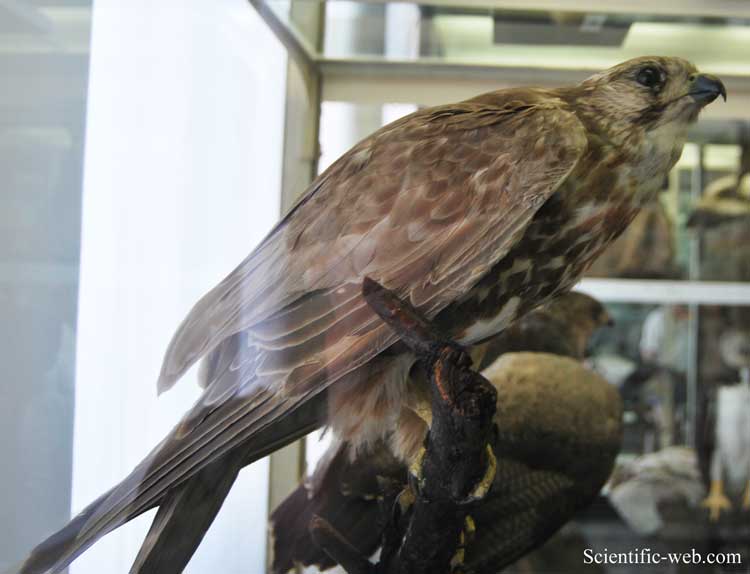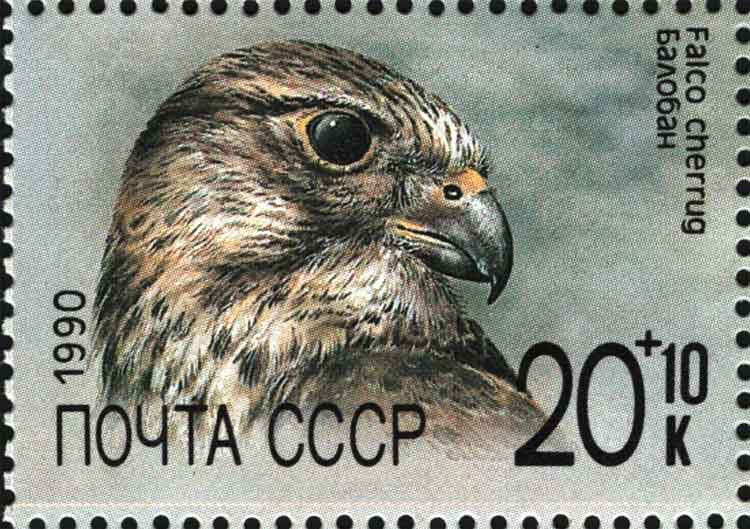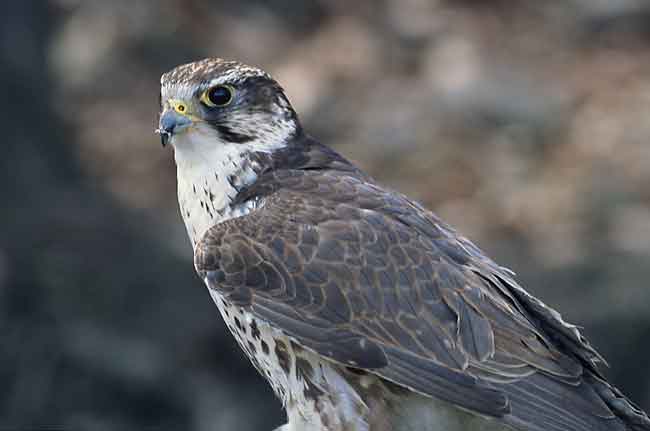
Falco cherrug , Photo: Michael Lahanas
Superregnum: Eukaryota
Regnum: Animalia
Subregnum: Eumetazoa
Cladus: Bilateria
Cladus: Nephrozoa
Superphylum: Deuterostomia
Phylum: Chordata
Cladus: Craniata
Subphylum: Vertebrata
Infraphylum: Gnathostomata
Superclassis: Tetrapoda
Cladus: Reptiliomorpha
Cladus: Amniota
Classis: Reptilia
Cladus: Eureptilia
Cladus: Romeriida
Subclassis: Diapsida
Cladus: Sauria
Infraclassis: Archosauromorpha
Cladus: Crurotarsi
Divisio: Archosauria
Subsectio: Ornithodira
Subtaxon: Dinosauromorpha
Cladus: Dinosauria
Ordo: Saurischia
Cladus: Theropoda
Cladus: Neotheropoda
Infraclassis: Aves
Cladus: Euavialae
Cladus: Avebrevicauda
Cladus: Pygostylia
Cladus: Ornithothoraces
Cladus: Euornithes
Cladus: Ornithuromorpha
Cladus: Ornithurae
Cladus: Carinatae
Parvclassis: Neornithes
Cohors: Neognathae
Ordo: Falconiformes
Familia: Falconidae
Subfamilia: Falconinae
Genus: Falco
Species: Falco cherrug
Subspecies: F. c. altaicus – F. c. cherrug – F. c. coatsi – F. c. hendersoni – F. c. milvipes
Name
Falco cherrug J. E. Gray, 1834
Synonyms
Falco lanarius
Saker Falcons, Joseph Wolf

Falco cherrug, Biology Stamps
References
Illustrations of Indian zoology 2 pt 15-16 pl. 25 BHL
IUCN: Falco cherrug (Endangered)
Vernacular names
العربية: صقر حر
azərbaycanca: Baloban
български: Ловен сокол
brezhoneg: Falc'hun sakr
català: Falcó sacre
čeština: Raroh velký
Чӑвашла: Этелĕк
dansk: Slagfalk
Deutsch: Sakerfalke
Ελληνικά: Στεπογέρακο
English: Saker Falcon
Esperanto: Tatara falko
español: Halcón Sacre
eesti: Stepipistrik
فارسی: بالابان (پرنده)
suomi: Aavikkohaukka
français: Faucon sacre
עברית: בז צידים
hrvatski: Stepski sokol
magyar: Kerecsensólyom
հայերեն: Բալոբան
íslenska: Vargfálki
italiano: Falco sacro
日本語: セーカーハヤブサ
ქართული: ბარი (ფრინველი)
қазақша: Ителгі
한국어: 헨다손매
lietuvių: Taurusis sakalas
македонски: Степски сокол
монгол: Идлэг шонхор
Malti: Bies Rasu Bajda
Nederlands: Sakervalk
norsk nynorsk: Tartarfalk
norsk: Tartarfalk
polski: Raróg
português: Falcão-sacre
русский: Балобан
slovenčina: Sokol rároh
slovenščina: Sokol morilec
shqip: Skifteri i gjuetisë
српски / srpski: Banatski soko / Банатски соко
svenska: Tatarfalk
Kiswahili: Kozi Madoa
Türkçe: Ulu doğan
українська: Соколині
中文: 猎隼

Falco cherrug (*)
The saker falcon (Falco cherrug) is a large species of falcon. This species breeds from central Europe eastwards across the Palearctic to Manchuria. It is mainly migratory except in the southernmost parts of its range, wintering in Ethiopia, the Arabian peninsula, northern Pakistan and western China. The saker falcon is the national bird of Hungary, the United Arab Emirates, and Mongolia.
Taxonomy and systematics
This species belongs to the close-knit hierofalcon complex. In this group, there is ample evidence for rampant hybridization and incomplete lineage sorting which confounds analyses of DNA sequence data to a massive extent; molecular studies with small sample sizes can simply not be expected to yield reliable conclusions in the entire hierofalcon group. The radiation of the entire living diversity of hierofalcons seems to have taken place in the Eemian interglacial at the start of the Late Pleistocene, a mere 130,000–115,000 years ago; the saker falcon represents a lineage that expanded out of northeastern Africa into the interior of southeastern Europe and Asia, by way of the eastern Mediterranean region.[2][3][4][5]
In captivity, lanners and sakers can interbreed, and gyrfalcon-saker hybrids are also available (see bird flu experiment described in "Ecology and status"). The specific name, cherrug, comes from the Sindhi name charg for a female saker.[6] The common name saker comes from the (Arabic: صقر, romanized: Ṣaqr) meaning "falcon".[7][8]
Saker falcons at the northeast edge of the range in the Altai Mountains are slightly larger, and darker and more heavily spotted on the underparts than other populations. These, known as the Altai falcon, have been treated in the past either as a distinct species "Falco altaicus" or as a hybrid between saker falcon and gyrfalcon, but modern opinion (e.g. (Orta 1994)) is to tentatively treat it as a form of saker falcon, until comprehensive studies of its population genetics and ecology are available.[9]
Description
The saker falcon is a large hierofalcon, larger than the lanner falcon and almost as large as gyrfalcon at 45–57 cm (18–22 in) length with a wingspan of 97–126 cm (38–50 in). Males weigh between 730–990 g (26–35 oz) and females 970–1,300 g (34–46 oz). It resembles a larger but browner gyrfalcon. It is larger and more heavily built than the related lanner falcon.[9]
Saker falcons tend to have variable plumage. Males and females are similar, except in size, as are young birds, although these tend to be darker and more heavily streaked. The call is a sharp kiy-ee or a repeated kyak-kyak-kyak.[9]
Ecology
The saker falcon is a raptor of open grasslands preferably with some trees or cliffs. It often hunts by horizontal pursuit, rather than the peregrine's stoop from a height, and feeds mainly on rodents and birds. In Europe, ground squirrels and feral pigeons are the most common prey items. This species usually builds no nest of own, but lays its 3–6 eggs in an old stick nest in a tree which was previously used by other birds such as storks, ravens or buzzards. It also often nests on cliffs.
Saker nests support a species-rich assemblage of commensal insects.[10]
Status and conservation
BirdLife International categorises this bird as endangered, due to a rapid population decline, particularly on the central Asian breeding grounds. Ever since the collapse of the Soviet Union, the United Arab Emirates have been the main destination for thousands of falcons caught and sold illegally for hefty sums at the black market. Kazakhstan is estimated to lose up to 1,000 saker falcons per year.[11]
The species also faces pressure from habitat loss and destruction. The population was estimated to be between 7,200 and 8,800 mature individuals in 2004. However, sakers live at low densities across large ranges in remote regions, making distribution status difficult to assess. A climatic niche modelling study pinpointed certain remote areas for targeted population surveys.[12] In the United States, Canada and Europe there are several captive breeding projects. The most dramatic decline of the saker falcon in Asia has been in Kazakhstan and Uzbekistan. In contrast, a strongly protected and relatively abundant population persists in Hungary.
Saker falcons are known to be very susceptible to avian influenza, individuals having been found infected with highly pathogenic H5N1 (in Saudi Arabia) and H7N7 (in Italy) strains. Therefore, an experiment was done with hybrid gyr-saker falcons, which found that five falcons vaccinated with a commercial H5N2 influenza vaccine survived infection with a highly pathogenic H5N1 strain, whereas five unvaccinated falcons died. This means that sakers could be protected from bird flu by vaccination, at least in captivity.[13]
Egg – Muséum de Toulouse
Captive, Carolina Raptor Center, United States
Captive, Carolina Raptor Center
Captive bird, Chew Valley Lake, England
Captive bird, Doha, Qatar
Captive bird
Flying bird at bird show
A saker falcon (Turul) monument at Tatabánya, Hungary.
In culture
A Hungarian mythological bird, the Turul, was probably a saker falcon (kerecsensólyom), and the saker falcon is the national bird of Hungary.[14][15] In 2012, the saker falcon was selected as the national bird of Mongolia.[16]
In Disney's Mulan, the Hun leader Shan Yu owns a saker falcon called Hayabusa.
In the children's book Tiger Wars by Steve Backshall, one of the main characters is called Saker after the falcon.
Use in falconry
The saker falcon has been used in falconry for thousands of years, and like its very close relative the gyrfalcon is a highly regarded falconry bird. Swift and powerful, it is effective against medium and large game bird species.[17] Saker falcons can reach speeds of 120 to 150 km/h and suddenly swoop down on their prey.[18] In recent years it is possible that hybrids of saker falcon and peregrine falcon have been developed in order to provide falconers a bird with greater size and horizontal speed than the peregrine, with greater propensity for diving stoops on game than the saker.
References
BirdLife International (2013). "Falco cherrug". IUCN Red List of Threatened Species. 2013. Retrieved 26 November 2013.
Helbig, A.J.; Seibold, I.; Bednarek, W.; Brüning, H.; Gaucher, P.; Ristow, D.; Scharlau, W.; Schmidl, D.; Wink, Michael (1994). Meyburg, B.-U.; Chancellor, R.D. (eds.). Phylogenetic relationships among falcon species (genus Falco) according to DNA sequence variation of the cytochrome b gene (PDF). Raptor conservation today. pp. 593–599.
Wink, Michael; Seibold, I.; Lotfikhah, F.; Bednarek, W. (1998). Chancellor, R.D.; Meyburg, B.-U.; Ferrero, J.J. (eds.). Molecular systematics of holarctic raptors (Order Falconiformes) (PDF). Holarctic Birds of Prey. Adenex & WWGBP. pp. 29–48.
Wink, Michael; Sauer-Gürth, Hedi; Ellis, David; Kenward, Robert (2004). Chancellor, R.D.; Meyburg, B.-U. (eds.). Phylogenetic relationships in the Hierofalco complex (Saker-, Gyr-, Lanner-, Laggar Falcon) (PDF). Raptors Worldwide. Berlin: WWGBP. pp. 499–504.
Nittinger, F.; Haring, E.; Pinsker, W.; Wink, Michael; Gamauf, A. (2005). "Out of Africa? Phylogenetic relationships between Falco biarmicus and other hierofalcons (Aves Falconidae)" (PDF). Journal of Zoological Systematics and Evolutionary Research. 43 (4): 321–331. doi:10.1111/j.1439-0469.2005.00326.x.
Jobling, James A. (1991). A Dictionary of Scientific Bird Names. OUP. ISBN 0-19-854634-3.
"Definition of saker". Collins English Dictionary. Retrieved 8 August 2012.
Note Rev. H. B. Tristram's 1859 observation on the Arabic usage of sakqr page 24 in "Notes on birds observed in southern Palestine" The Ibis vol. 1. "Ta'ir el Hohr, "the noble bird," is the common appellation of the Peregrine and its congeners. "Sakqr" I have only heard applied to the very large falcons — never to the F. peregrinus or F.punicus, both of which are trained by the Arabs for the chase."
Orta, J., Boesman, P., Sharpe, C.J. & Marks, J.S. (2019). Saker Falcon (Falco cherrug). In: del Hoyo, J., Elliott, A., Sargatal, J., Christie, D.A. & de Juana, E. (eds.). Handbook of the Birds of the World Alive. Lynx Edicions, Barcelona. (retrieved from https://www.hbw.com/node/53244 on 15 February 2019).
Merkl, O.; Bagyura, J.; Rózsa, L. (2004). "Insects inhabiting Saker (Falco cherrug) nests in Hungary" (PDF). Ornis Hungarica. 14 (1–2): 23–26.
Antelava, Natalia (5 August 2007). "Kazakhs use eagle to save rare falcon". BBC News.
Sutton, Luke J.; Puschendorf, Robert (2020). "Climatic niche of the Saker Falcon Falco cherrug: predicted new areas to direct population surveys in Central Asia". Ibis. 162 (1): 27–41. doi:10.1111/ibi.12700. hdl:10026.1/13028. ISSN 1474-919X.
Lierz, Michael; Hafez, Hafez M.; Klopfleisch, Robert; Lüschow, Dörte; Prusas, Christine; Teifke, Jens P.; Rudolf, Miriam; Grund, Christian; Kalthoff, Donata; Mettenleiter, Thomas; Beer, Martin; Harder, Timm (November 2007). "Protection and Virus Shedding of Falcons Vaccinated against Highly Pathogenic Avian Influenza A Virus (H5N1)". Emerging Infectious Diseases. Centers for Disease Control. 13 (11): 1667–1674. doi:10.3201/eid1311.070705. PMC 3375792. PMID 18217549.
KissPál, Szabolcs (2014). "The Rise of a Fallen Feather: The Symbolism of the Turul Bird in Contemporary Hungary". E-Flux Journal. 56.
Molnar, Laco (January 2000). "Saker Falcon protection in Eastern Europe" (PDF). Falco (17): 7. ISSN 1608-1544.
"Saker Falcon – National Bird for Mongolia".
Beebe, Frank (1984). A Falconry Manual. Hancock House Publishers. ISBN 0-88839-978-2.
"The Saker Falcon in Austria/biology". Retrieved 2020-12-27.
Orta, Jaume (1994). del Hoyo, Josep; Elliott, Andrew; Sargatal, Jordi (eds.). Saker Falcon. Handbook of Birds of the World. Volume 2: New World Vultures to Guineafowl. Barcelona: Lynx Edicions. pp. 273–274, plate 28. ISBN 84-87334-15-6.
Tomek, Teresa; Bocheński, Zygmunt (2005). "Weichselian and Holocene bird remains from Komarowa Cave, Central Poland" (PDF). Acta Zoologica Cracoviensia. 48A (1–2): 43–65. doi:10.3409/173491505783995743.
Retrieved from "http://en.wikipedia.org/"
All text is available under the terms of the GNU Free Documentation License


